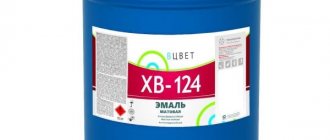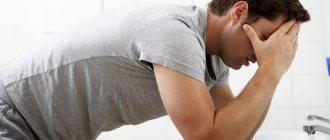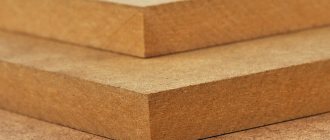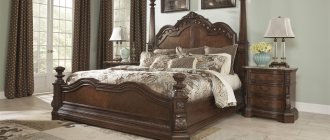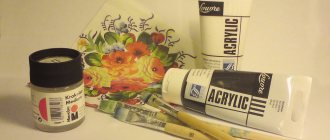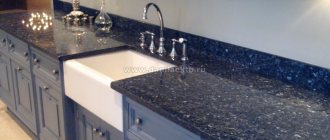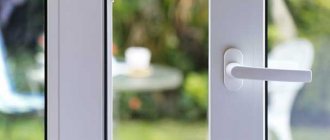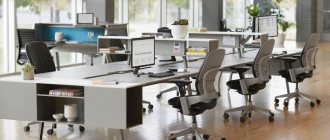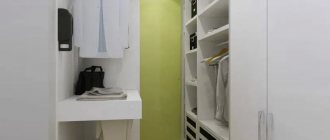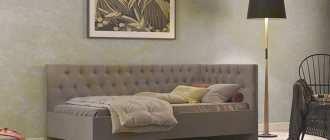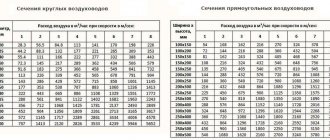Siding has become widespread, firstly, this is due to the aesthetic appearance of buildings, and secondly, with a good protective function from environmental influences. The material combines minimal cost and resistance to deformation - it is an ideal solution for the exterior decoration of buildings of any size, from small outbuildings, country houses, cottages, to huge industrial and commercial facilities.
Facade siding
Overview of cladding material
Cladding the facade with panels or boards is a popular solution for protecting a home from natural phenomena. The choice of siding is determined by the dimensions (width, length, thickness), nature and technical performance of the products. Factors that make up the durability, practicality of the facade, and the level of complexity of installation work are also subject to consideration.
The appearance of modern siding was preceded by covering the facade with planed boards at a slight slope relative to the vertical. This is how the natural drainage of rainwater was arranged, the walls were protected from wind and mechanical impact from precipitation in general.
Today, manufacturers offer vinyl and metal samples as a cheaper alternative to natural wood. At the same time, the design may vary in texture (usually imitation of natural materials), shape (panel, board) and color.
The table provides a brief description of siding made from different materials. Such parameters as execution, texture, features of raw materials, main pros and cons are considered.
| Tree | Cement and ceramics | Vinyl | Metal |
| Solid wood board | Cement composition panel | Panels are vertical, horizontal. | Corrugated steel sheeting |
| Convex (cylindrical) or flat (ship plank) | Smooth or textured with imitation of masonry material. Possibly polyurethane coating. | Smooth, perforated or textured with imitation of natural materials. | Smooth, corrugated in cross section with different heights and wave shapes (round, trapezoidal) and different pitches. |
| Classes "A", "B" and "C". The difference is in the number of permissible knots and cracks: up to two per board, up to two per meter and without restrictions on knots up to 15 mm, up to three cracks, respectively. | For production at a production or construction site, a solution of cement and cellulose fiber is used. For ceramics, add clay to the solution. | Consists of PVC (up to 80%), additives and pigments. The coloring is continuous. | Thin sheet steel with galvanized coating. More often, polymer paint with mineral pigments (8 colors) is additionally applied. Imitation of stone or wood texture is possible. |
| Low thermal conductivity, naturalness, environmental friendliness, ease of cutting and installation. | Durability, safety, resistance to fire, biological activity, natural phenomena and mechanical stress (except for impact - it may burst). Ceramics retain heat better, insulate from noise, and withstand loads. | Light weight, wide range of operating temperatures (from -50 to +60 degrees Celsius), environmental friendliness, resistance to external operating conditions, durability, ease of maintenance and low cost. | Light weight, quick and easy installation, durability and environmental friendliness, resistance to general load from natural phenomena, biological activity, temperature changes (from -60 to +80 degrees Celsius). |
| The cost of natural wood. Periodic treatment with protective compounds against fungus and moisture is required in order to reduce the flammability class. If painting has been done, the coating needs updating. | Heaviness, which is reflected in the reinforcement of the sheathing and the application of greater force during installation. The total estimate for façade cladding is increasing. Ceramics are difficult to install and are expensive. | Fragility in cold weather, compared to analogues, greater thermal expansion. Weak resistance to various mechanical loads. Fading or yellowing may occur in cheap collections. | Weakness to moisture, corrosion due to wear and tear, damage to the protective layers of galvanization and paint. |
Based on the listed characteristics of materials, a rating of positions according to demand is formed. Here, metal and vinyl siding stand out for the outer cladding of the walls of the house, the dimensions of which will be found below.
See also: Catalog of companies that specialize in finishing materials and related work
Equipment
To calculate the volume of materials required, it is not enough to know the dimensions of metal or vinyl siding. Part of the sheathed area will be occupied by additional elements. With them, the overall appearance of the finish looks complete, and the end edges of the boards or panels are protected from damage. This also includes products for the design of door and window openings, technological openings.
The list of offered components looks like this:
- starting, finishing and near-window bar;
- U-shaped metal profile for sheathing, F-shaped for roofing edge;
- drain and connecting rail with H-cross section;
- internal and external corners and trims;
- molding for the junction of the roof with the gable and soffits for decorating the lower part of the overhangs.
The selection of additional elements is carried out by analogy with the base. The material is the same, the color is identical in contrast.
Contrasting color additional elements Source twimg.com
Experts recommend focusing on one manufacturer to eliminate surprises during installation work.
Sheathing options
Since most facade materials are in the form of boards, the coating is striped. The lamellas can be placed horizontally, vertically or in a combination of cladding directions.
Horizontal layout is best used when:
- there are no large distances between windows, doors, cornices and other facade elements;
- the dominant elements are vertical;
- the design has sharp-angled gables.
Vertical cladding looks best in combination with windows that dominate the horizontal direction.
Combined cladding is the best option for houses with complex facade configurations.
Siding sizes for exterior use
The sizes of shiplap siding made from different materials vary. This also applies to the width and length of the panels that can be found on sale. Let's consider the standard positions of each option, including the thickness of the siding.
Standard sizes of wood siding
The length of solid wood siding ranges from 2 to 6 meters. The thickness of the board is 4 cm. The width of the siding is 9-18 cm.
Wooden cladding of a house Source kronatomsk.ru
Physical parameters of cement and ceramic panels
A heavy cement board has only one size according to factory standards: 19*360 cm with a thickness of 1 cm. The ceramic analogue is made 0.5 m wide and 2.9 m long. The thickness can be 0.8-1 cm.
Vinyl siding dimensions width panel length
Dimensions of vinyl siding according to standards, regardless of version, are general. Width from 2 to 2.5 m, thickness 1-1.2 cm, length from 3 to 3.85 meters. Additionally, the height of the wave or relief is considered here - up to 4 cm.
How to calculate the quantity?
There are several methods available to calculate the required amount of siding. Some consumers want to turn to specialists to save time. The builder will independently inspect the structure and make calculations taking into account tolerances and waste.
The calculator program is another interesting option. There are sites on the Internet where you simply enter data; you do not need to draw anything on paper. It is important to enter the dimensions of the structure, as well as the elements; the program will make adjustments on its own.
There will always be users who manually count the number of blanks. This method is recognized as the most reliable and at the same time time-consuming. To make a calculation, you need to enter information on the dimensions of each wall.
The next step is to take into account the number of doors, windows, and any openings. A cornice panel or soffit is added to the drawing. Next, to calculate the square footage, you need to find out the total area of the material and divide it by the size of the siding.
Briefly about the main thing
Siding is made of solid wood, artificial stone based on cement, PVC or metal. The latter samples are more in demand due to their relatively low cost, light weight and durability.
The advantages of siding also include ease and speed of installation, a wide choice of shape, style, color, surface and texture.
The manufacturer offers standardized sizes: in one range or another, specific. As a rule, it is permissible to manufacture boards or panels according to individual parameters.
Ratings 0
Tree
See also
How much lining in a cube: calculation rules and calculator
There is also a wooden type of siding. With its help, the structure can be given a unique appearance. Clad like wood with imitation logs or timber.
Wood is an extremely capricious material. This is the most demanding type of façade siding in terms of maintenance and protective treatment.
But because of this, manufacturers try to adhere to uniform standards. If these requirements are violated, the boards may become deformed.
Therefore, the following dimensions are used:
- panel thickness from 18 to 23 mm;
- length is generally 3000-4000 mm;
- height in a small range from 200 to 220 mm;
- useful height is 180-200 mm;
- per panel there is 0.55-0.88 m2.
When installing wood siding, you will need to maintain it periodically. You should be prepared for this.
Popular manufacturers
The construction boom in multi-storey and private construction contributed to the creation of a siding production base in our country.
Subsidiaries of well-known European companies, equipped with the most advanced equipment and technologies, produce various types of siding and components for it according to international standards.
Let's look at which manufacturers are the most popular:
- “Docke” is a plant in Dmitrov for the production of vinyl siding from raw materials from German suppliers. Since 2011, it has been producing façade and plinth panels in 26 colors and 4 textures. Particularly popular is the “Ship Timber” siding with anti-hurricane lock, which gives the building a solid look. The warranty for Deuke products has been extended to 50 years; defect elimination within this period is carried out in the form of a free replacement of the product.
- Belgian (Grand Line) has been represented on the domestic market of facing materials (Obninsk) for 10 years. It produces both aluminum siding and PVC products using recipes and raw materials from American and European manufacturers. A special feature of the Grand Line is: the ideal geometry of the panels, allowing them to be mounted end-to-end, a wide range of additional elements for block house siding that contribute to the integrity of the design.
- "Orto" - factories in Chelyabinsk and Samara. Using domestic equipment, it produces 2-layer façade and plinth panels in 12 colors and 4 textures using the co-extrusion method. The product warranty is 25 years. The cheapest option among facing materials of this class.
- Vox siding on the domestic market is represented by Polish and Belarusian products (2 types of classic vinyl siding). It is successfully used for the restoration of old buildings. Affordable prices and the presence of additional elements make this facing material particularly attractive.
- has its dealers in Russia. Production facilities are located in Tver. LLC "Tekos" is a nominee for the All-Russian award "National Quality Brand".
Do you know which insulation is best to use under siding? More information here.
Peculiarities
The main advantages of siding are its resistance to moisture. Plastic models do not allow moisture to pass through, while metal analogues have a special polymer coating that ensures the water-repellent properties of the material.
It is important that siding has high strength levels, which makes it a reliable material for cladding a house. In this regard, metal panels are stronger and are not afraid of mechanical shocks
Due to the small coefficient of expansion, the profiles do not crack in frost and can withstand 60 freezing cycles. The presence of a hurricane lock allows you to safely use the material even in regions characterized by squally winds.
The service life of the material is also impressive, which on average, depending on the type of panels, is 30-60 years.
Most siding panels have a low weight (3-6 kg per m2), so additional strengthening of the foundation is not required. The profiles can be mounted together with thermal insulation material (mineral wool in rolls or polystyrene). Fixation is carried out directly on the wall or sheathing (made of wood or metal). If you choose the method of fastening to the lathing, then you don’t have to worry about the evenness of the walls. Thanks to this technique, it is easy to hide surface unevenness and cracks.
Thanks to the presence of a locking mechanism, the panels can be easily assembled using the principle of a children's construction set. In other words, installation can be carried out without the involvement of professionals; installation of the material is possible even at subzero temperatures. However, in this case, the panels should first be kept at room temperature for 24 hours.
Using siding with imitation of various surfaces, it is possible to achieve interesting stylistic solutions
It is important that the material imitates stone, wood, brick as accurately as possible; such stylization can only be suspected up close
Scope of application
It is worth noting that the cost of finishing a house with vinyl siding is relatively small. That is why its main area of application is the finishing of private buildings. In addition to the cottage itself, it can easily be used to cover almost all structures on a personal plot - from a guest house to an extension for agricultural equipment.
Here, the insignificant weight of the panels themselves plays a role, which will not add much weight to the structure, therefore, there will be no need to strengthen the foundation. Cladding with wood siding is perfect for finishing a bathhouse or sauna.
The dimensions and thickness of PVC siding allow it to be used as finishing for commercial and public buildings. At such facilities, in addition to facade work, the use of such vinyl material for interior decoration of large areas is successfully practiced.
Having studied all aspects, we can conclude that vinyl siding is an ideal facing material for private use. Optimal performance indicators, affordable pricing and a variety of sizes allow you to significantly save money, while making your home truly modern and warm.
Varieties
There are many types of material such as siding.
First of all, the main types of siding should be distinguished:
- Basement. In general, it was created in order to sheath the basement (lower) part of the building, but in practice it turned out that it is perfect for cladding the facade. The reasons for this were the high decorative qualities, since specialists specialize in simulating various types of brick or stone masonry, as well as in the strength and ease of installation work.
- Wall (facade). This is the main type of cladding that is suitable for any external parts of the building, namely for walls, attics, soffits, gables and others.
In addition, in the category of wall panels there is a division into:
- Horizontal. The most used type of panels, which have a horizontal arrangement and are attached from the bottom up. The main type of imitation is wood, as it is the most noble natural material.
- Vertical. The panels are placed vertically and installed from left to right or vice versa. Most often they are made with imitation stone masonry.
Please note that the façade type of siding is most often made to imitate walls made of wood (logs, beams, ship planks), and the plinth panels are most often made in the form of stone or brickwork.
The most important division of a material is its type. At the moment there are samples from the following types of material:
- Metal.
- Fiber cement.
- Wood.
- Plastic.
With all this, materials have their own subtypes - for example, wooden siding is made from stabilized or pressed wood, and plastic can be acrylic or vinyl type, and so on. But all the properties of panels of the same type are the same, which makes it possible to talk about them as a single group.
